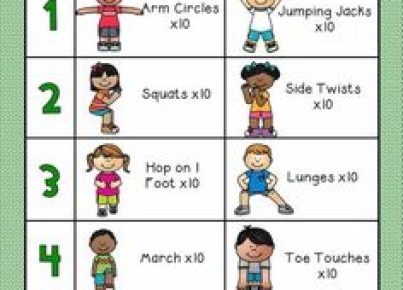Introduction
Physical Education (PE) and sports play an essential role in the holistic development of children. Engaging in physical activities not only promotes better physical health, but also improves mental and emotional well-being, fostering essential life skills such as teamwork, problem-solving, and self-discipline. This article will delve into the benefits of incorporating PE and sports in the lives of young people and explore ways to motivate them to participate more actively.
Benefits of Physical Education and Sports
1. Enhanced Physical Health
Engaging in regular physical activities promotes muscle strength, flexibility, cardiovascular endurance, balance, and coordination. Children who are active in PE and sports tend to be less prone to obesity, diabetes, heart disease, hypertension, and other chronic diseases later in life.
2. Improved Mental Health
Physical activity is known to release endorphins – neurotransmitters that reduce stress and anxiety while boosting mood. Regular exercise helps children cope with stress, depression, anxiety, and other mental health issues more effectively.
3. Increased Self-esteem
PE classes and sports provide children with opportunities to overcome challenges, improve skills, and achieve goals. These accomplishments usually result in a sense of pride and increased self-esteem.
4. Socialization
Participating in group exercises or team sports allows children to develop social skills such as communication, cooperation, empathy, conflict resolution, as well as friendships that can last a lifetime.
5. Cognitive Benefits
Physical activities foster cognitive development by improving concentration, memory retention, focus, and critical thinking skills – all of which contribute significantly to academic performance.
6. Life Skills
Through PE and sports programs, young people learn essential life skills like leadership qualities, goal-setting abilities, time management skills, perseverance through adversity – all vital components for their future success.
Motivating Children to Participate in PE and Sports
1. Create Positive Environments
Supportive school climates where children feel safe, respected, and engaged are crucial in encouraging students to participate in PE classes and sports actively.
2. Offer a Variety of Options
Variety is key; schools should offer a wide range of sports and physical activities to meet different interests and skill levels.
3. Emphasize Enjoyment
Physical activities should be fun, enjoyable, and accessible to encourage children to have a positive outlook towards PE and sports.
4. Encourage Family Involvement
Parents or guardians who have healthy active lifestyles set good examples for their children. Family-oriented activities such as hiking, biking, or playing games may inspire children to develop a life-long love for physical activity.
Conclusion
Physical Education and sports play an invaluable role in shaping the lives of young people. While schools need to create supportive environments that facilitate students’ engagement in various physical activities, parents must foster healthy habits at home by actively participating alongside their children. By embracing the importance of PE and sports in daily life, we can lay the foundation for a healthier, more confident generation ready to take on future challenges with zeal and enthusiasm.





